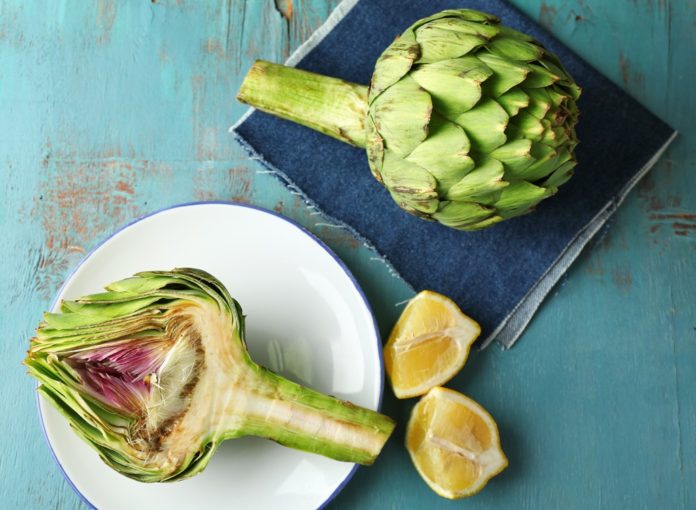Spring is in the air, and in the blink of an eye, it’ll be time for skin-baring clothes that are quite unforgiving of winter’s dietary indulgences. But that’s where spring superfoods come into play.
Start your pre-summer slimdown with these nutrient-packed superfoods that come into season in the spring, along with a few tried-and-true items available year-round. The benefits of stocking up on the fruits and veggies that are the first to arrive in your greenmarket are twofold: They’re sold at optimum freshness—having been grown locally rather than shipped from another hemisphere—which means that they’re also inexpensive due to lower shipping costs. It’s a win-win!
So stock up on our go-to picks from this list of foods below to tone up before swimsuit season. And to help you along your weight-loss journey, we have plenty of smoothie recipes ready to go that you can whip up with some of these spring superfoods. Plus, check out our 22 Meals to Melt Belly Fat in 2022.
Their bright red hue surely adds aesthetic to a salad, but radishes’ color is responsible for more than just decorative flair. Radishes get their red hue due to anthocyanins, a phytochemical that has been shown to burn fat and reduce the risk of diabetes. They’ve also been shown to reduce cholesterol, insulin resistance, and inflammation. According to a review in the journal Nutrients, radishes can help ward off diabetes due to their ability to reduce the accumulation of free radicals, promote glucose uptake and energy metabolism, and reduce glucose absorption in the intestine. Looking to add them to your springtime diet? Try slicing up the spheres and topping them with hummus or feta for an easy, high-fiber snack.
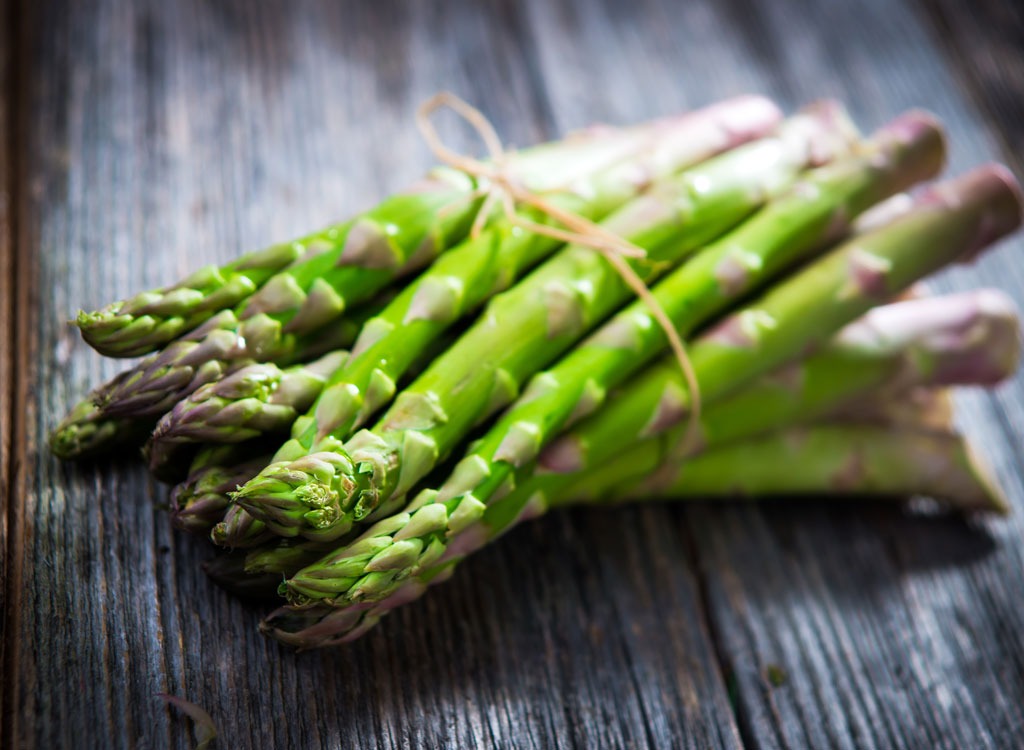
As one of the very first veggies to make it to the farmer’s market in April and May, asparagus is rich in calcium, copper, folate, and iron in addition to vitamins A, C, E, K, and B6. A 2010 study by the Department of Pharmacology at Kasturba Medical College found that the diuretic quality in asparagus helps to purge toxins from your system. The spears also contain soluble fiber and insoluble fiber, slow-digesting nutrients that keep you feeling full after a meal. Sure, the sulfurous compound in asparagus, called mercaptan, makes your pee smell funny within 15 to 30 minutes of eating it, but that shouldn’t be a dealbreaker. At only 27 calories per cup, and three grams of protein, it’s a food you can chow down on with zero guilt.
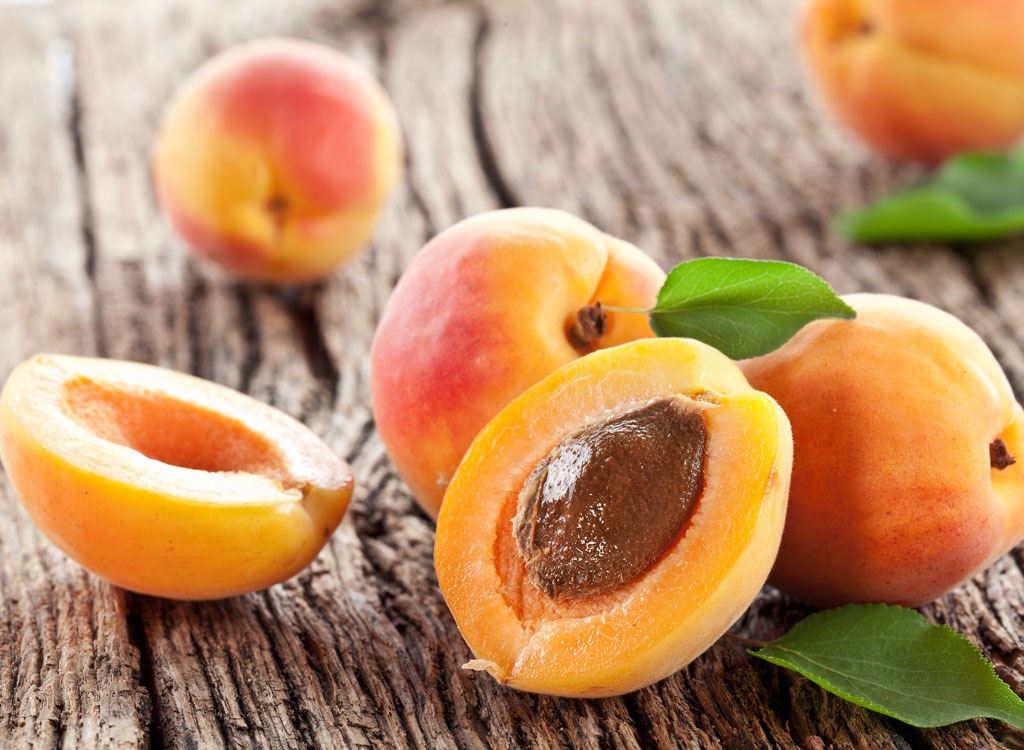
In season from late April to mid-July, this stone fruit is the perfect replacement for other more sinful sweets. Loaded with potassium, vitamin C, and vitamin A —which promotes good vision, a strong immune system, and robust reproductive health—apricots have 3 grams of fiber and only 79 calories per cup. “If your goal is to lose weight, you could eat two apricots for dessert, get a great taste of sweetness but really consume very few calories,” says Keri Gans, MS, RDN, CDN, author of The Small Change Diet. And if you are looking to improve your diet and shed weight, our advice is to take it slow so you actually keep it off with these 30 Ways To Lose Weight and Keep It Off.
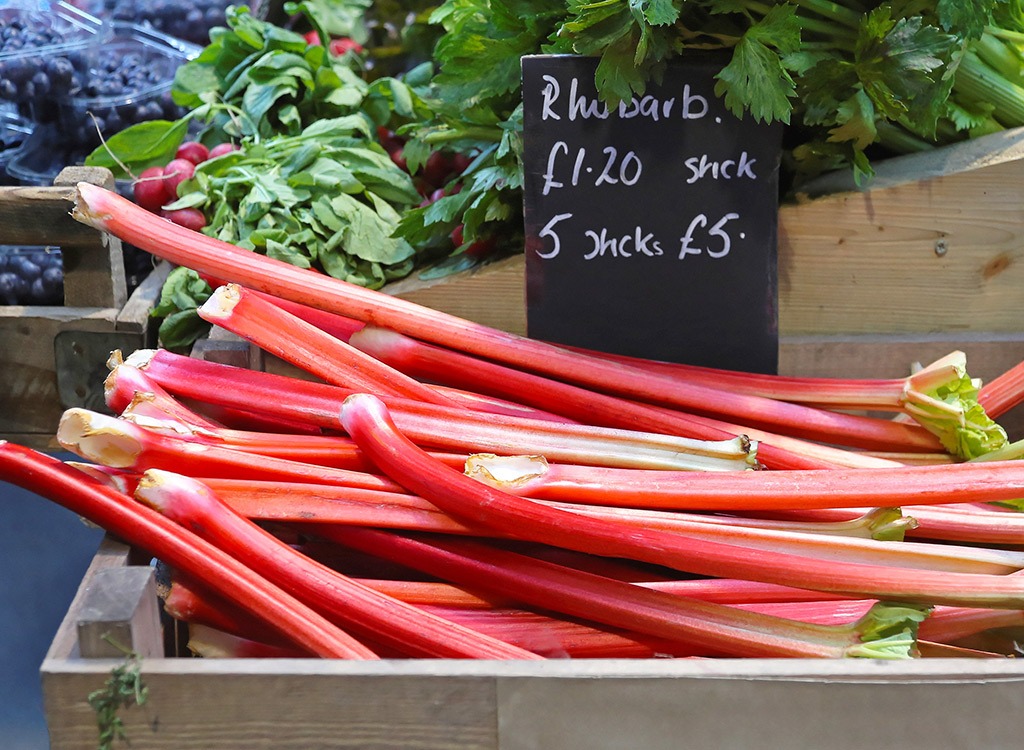
This plant might look like celery, but if you’ve ever been adventurous enough to cook with it, you know that this tart vegetable loves to partner with fruit to become a sweet treat. (Just don’t eat the leaves, because they’re poisonous). According to a study in the Journal of Toxicological Sciences, rhubarb is high in catechins, the same compound that gives green tea its belly-fat-fighting properties. Catechins blast adipose tissue by triggering the release of fat from fat cells (particularly in the belly) and then speed up the liver’s capacity for turning that fat into energy.
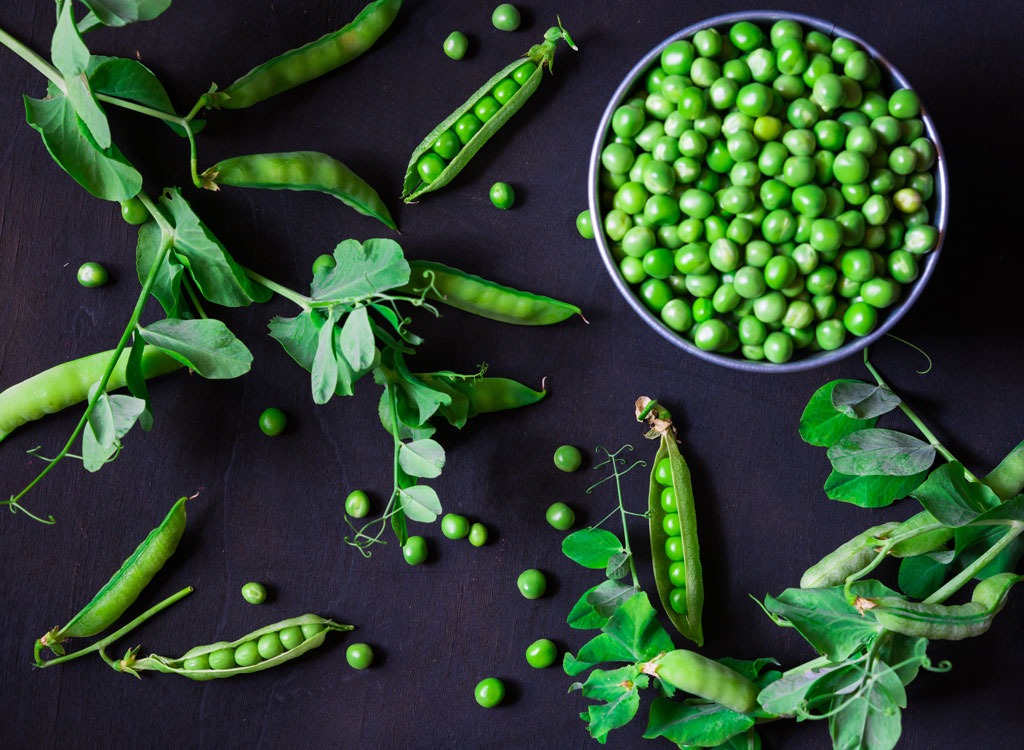
For far too long, the legume that’s packed with a surprising amount of protein—9 grams per cup—has gotten a bad rap. “People think peas are a starchier vegetable and not necessarily one that they should be eating, but that couldn’t be further from the truth,” says Gans. These April arrivals to the greenmarket are loaded with a solid dose of fiber in addition to a nutritional goldmine of vitamins and minerals including vitamins A, B6, C and K, folate, riboflavin, thiamin, magnesium, potassium, phosphorus, manganese, and iron.
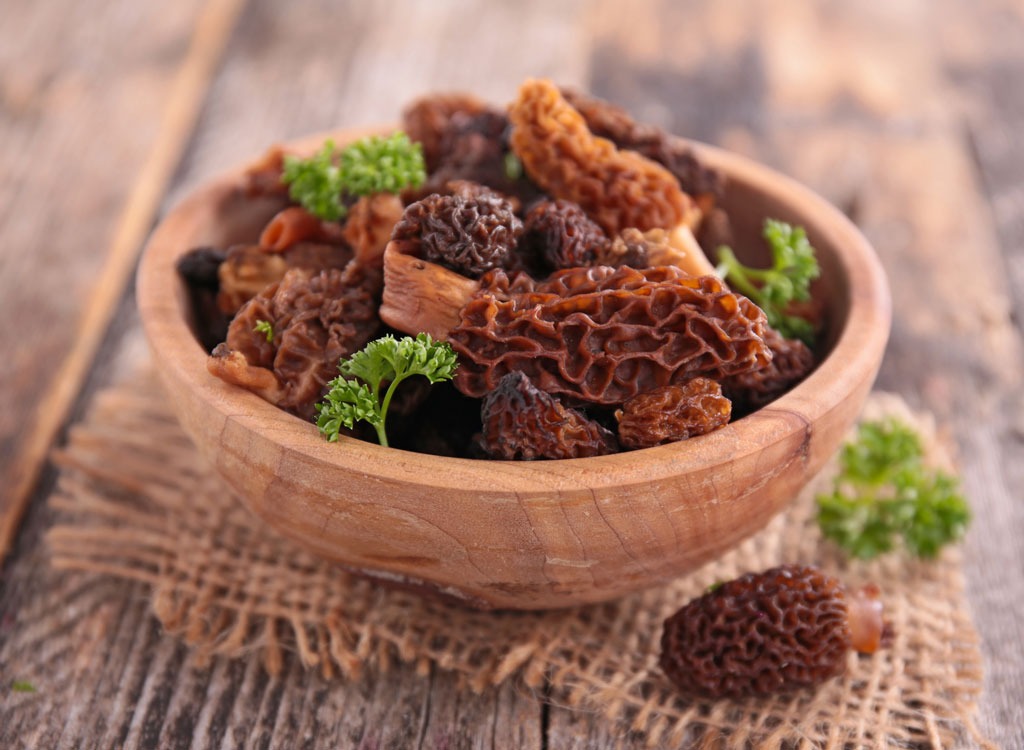
These mushrooms are the third highest vegetable source of vitamin D (only behind two other mushrooms), serving you 23 percent of your recommended daily value in a single cup. This vitamin has many biological functions beyond its classic role in bone metabolism, one of which is regulating your immune system. One study found that when vitamin D concentrations were low in a group of runners, they had a biomarker for increased inflammation. When your body is in a state of chronic inflammation, it can lead to clogged arteries, worsened insulin resistance, and even weight gain. So besides climbing out of that cold, dreary hole that you dug yourself into this winter and catching some Vitamin-D-producing rays, make sure to grab some morel mushrooms!
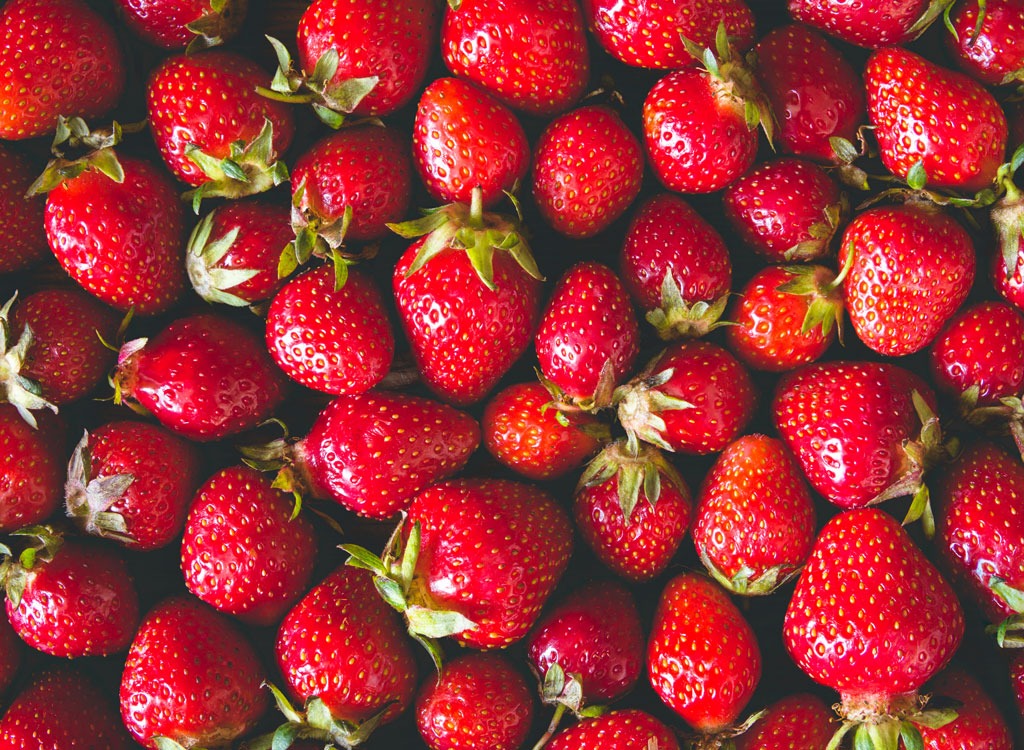
Strawberries come into season between mid-April and June, which makes them a great choice for your spring fat-burning diet. “A 2015 study examined the effects of chokeberries, which are high in the plant chemical anthocyanins,” explains Toby Amidor, MS, RD nutrition expert and author of The Greek Yogurt Kitchen: More Than 130 Delicious, Healthy Recipes For Every Meal of the Day. “The study found that anthocyanins may help decrease belly fat accumulation in rats. Although you can’t find chokeberries very easily in the U.S., you can find strawberries which are overflowing with anthocyanins.” At only 50 calories per cup, they also provide 3 grams of filling fiber and loads of metabolism-boosting vitamin C.
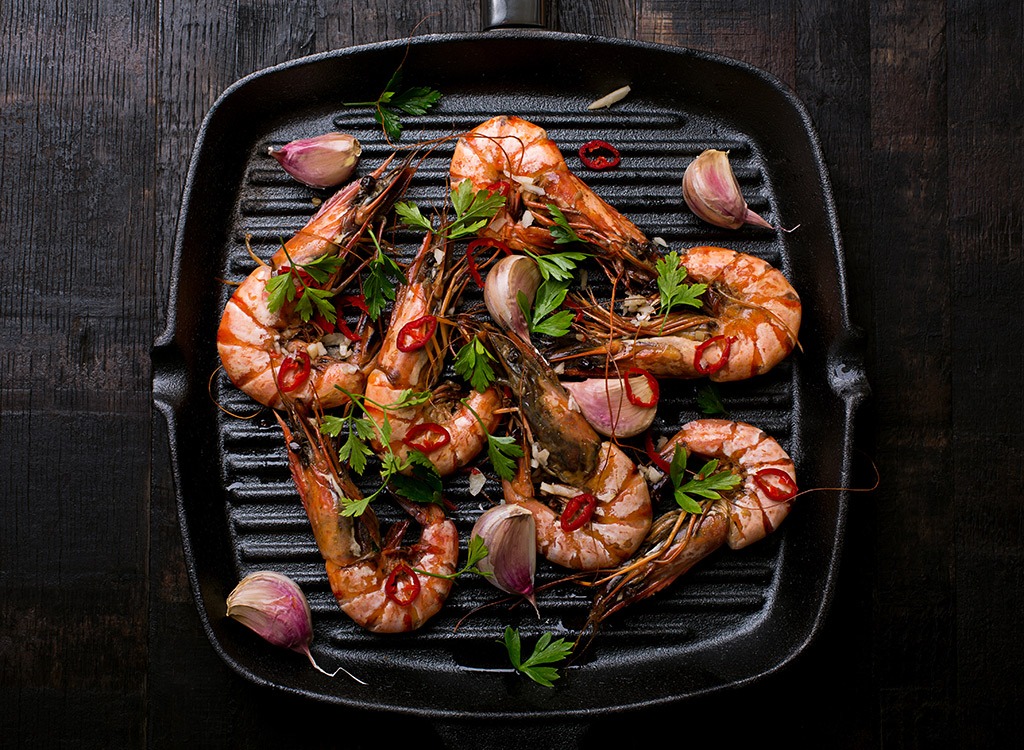
While fish is always a great go-to for weight loss, don’t overlook the shellfish that gets sidelined by diet stars like salmon and tuna. “I think shrimp sometimes is forgotten,” Gans says. “Three ounces of steamed shrimp contains only 84 calories with 17 grams of protein.” Shrimp is also an excellent source of the antioxidant mineral selenium, which maintains heart health. Those looking to avoid high cholesterol should be aware that there are 220 milligrams of cholesterol contained in a 4-ounce serving of shrimp but there’s a bright side: these crustaceans also contain heart-healthy omega-3 fatty acids.
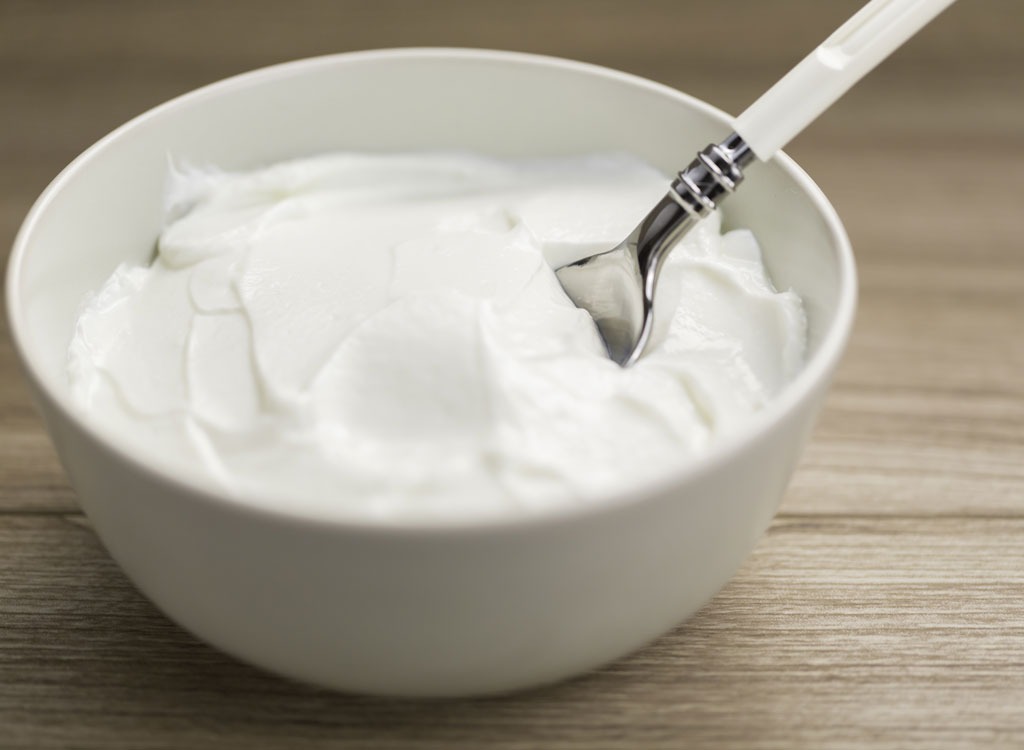
As the weather gets warmer, a cool bowl of Greek yogurt paired with a low-sugar granola and berries is a refreshing breakfast that will keep you full all morning long. Loaded with potassium, protein, zinc, and vitamins B6 and B12, this tart and creamy dairy item is great as a snack or as a substitute for sour cream. And it’s been found to aid in staying slim. “A 2016 study looked at diet quality on the effects of belly fat and concluded that a high-quality diet was associated with lower belly fat,” Amidor says. “Foods that were included in a high-quality diet included yogurt.”
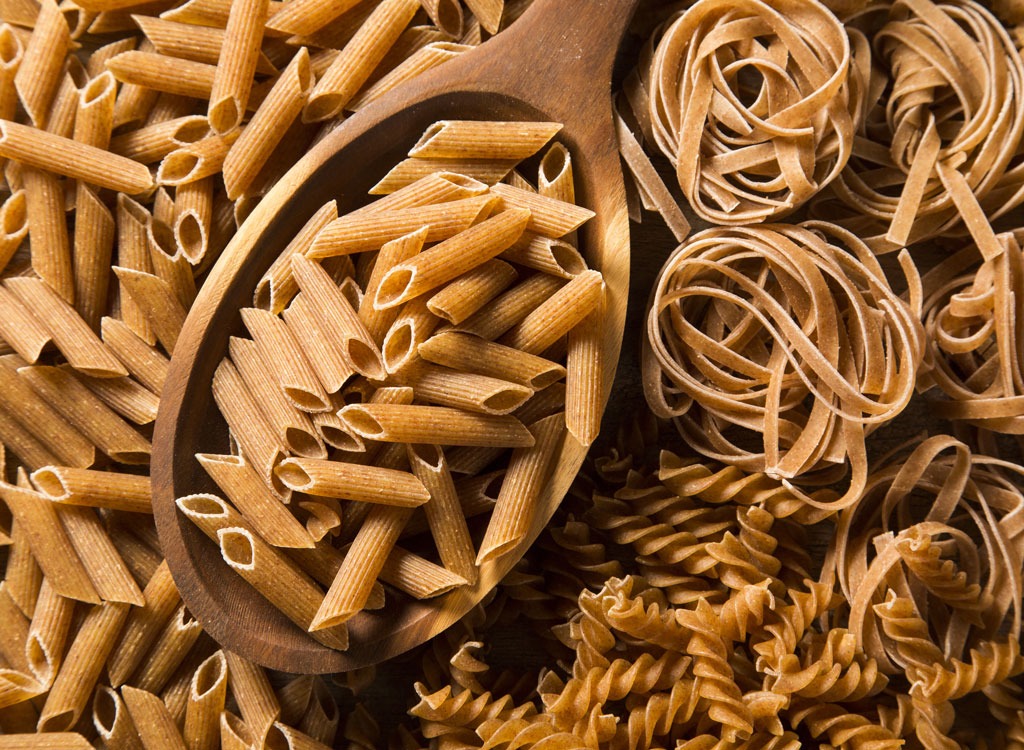
Pull your jaw up from the floor—indeed, this surprising carb just happens to be a not-so-guilty pleasure! “When we look at weight loss, we need to look at foods people love, and who doesn’t love pasta?” Gans asks, adding, “But we need to eat it in a healthy way. We mix it with the asparagus and the spinach. Maybe we add in some grilled shrimp.” High in B vitamins, copper, selenium, magnesium, and manganese, whole-wheat pasta is a filling addition to a meal balanced with plenty of veggies and healthy proteins. It’s also loaded with cancer-fighting fiber, which helps lower blood sugar and blood cholesterol levels.
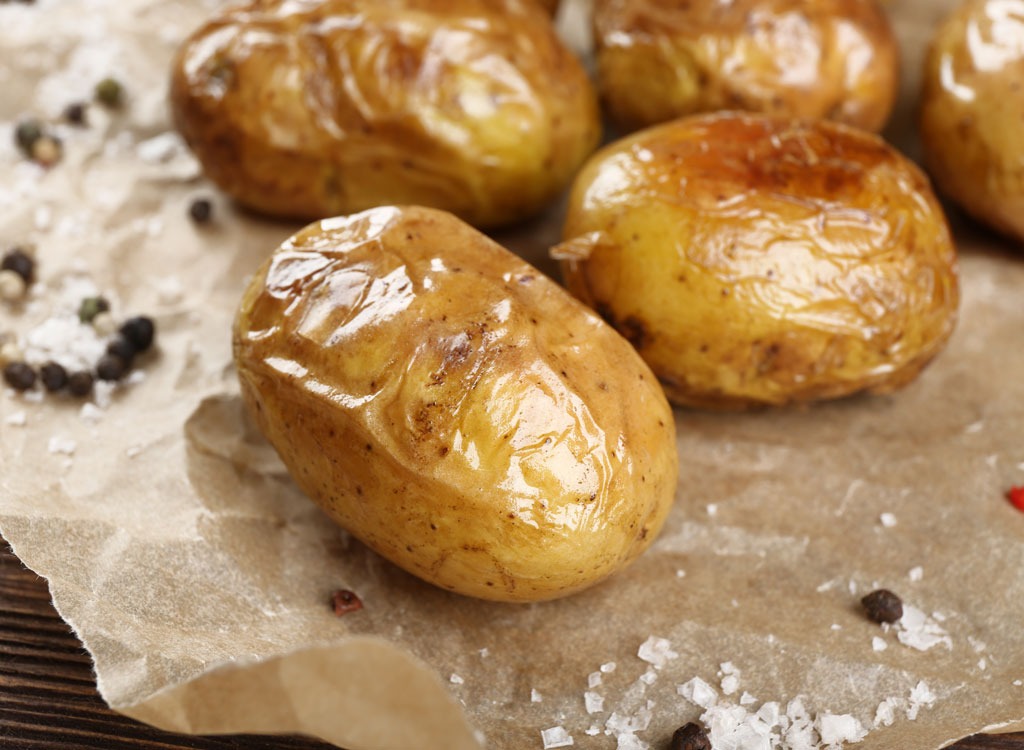
Sweet potatoes have often outshined the lowly white potato in terms of superfood status. Newsflash: The pale starchy vegetable isn’t the diet enemy so many presume it is. In fact, your average tater has wonderful nutritional benefits. A medium-sized baked potato, which is roughly 110 calories, contains the potassium and fiber that’s beneficial in lowering blood pressure. The tubers are also loaded with vitamins B6 and C, which promote brain function. Just be sure to withhold the sour cream and opt for healthier toppings. “People don’t realize hummus is delicious on a baked potato. Mustard is great on a baked potato. Salsa is great on a baked potato,” Gans says.
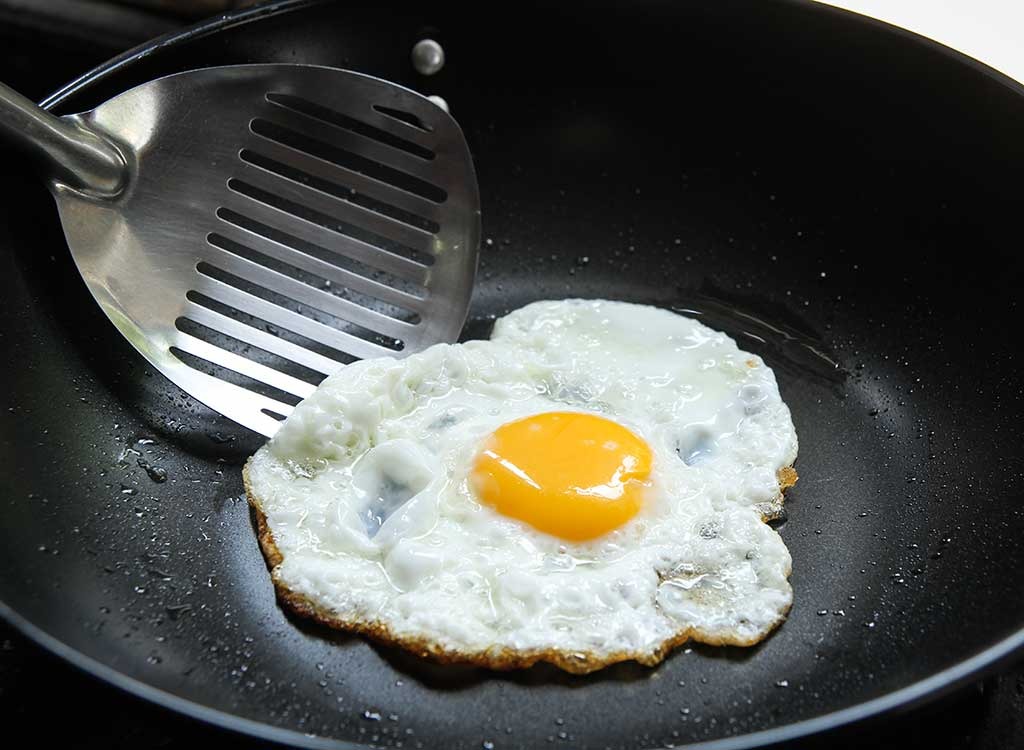
There’s nothing like a protein-packed egg to get your body and your diet energized. “A study published in the International Journal of Obesity examined the effects of an egg breakfast compared to a bagel breakfast containing similar calories in obese participants who want to lose weight,” explains Amidor. “Those who consumed two eggs in their breakfast while following a lower calorie diet lost 65 percent more weight and reduced their waist circumference by 34 percent compared to those who were on a similar calorie bagel breakfast.” What’s more, a 2015 study from Purdue University found that adding eggs to salads increased the body’s ability to absorb carotenoids, which have antioxidant and anti-inflammatory effects. Amidor suggests combining eggs with other superfoods, such whipping up a seasonal vegetable omelet with asparagus, zucchini, and tomatoes, for a nutritional double-whammy. For more antioxidant-rich foods, check out our list of 30 Foods That Fight Inflammation.
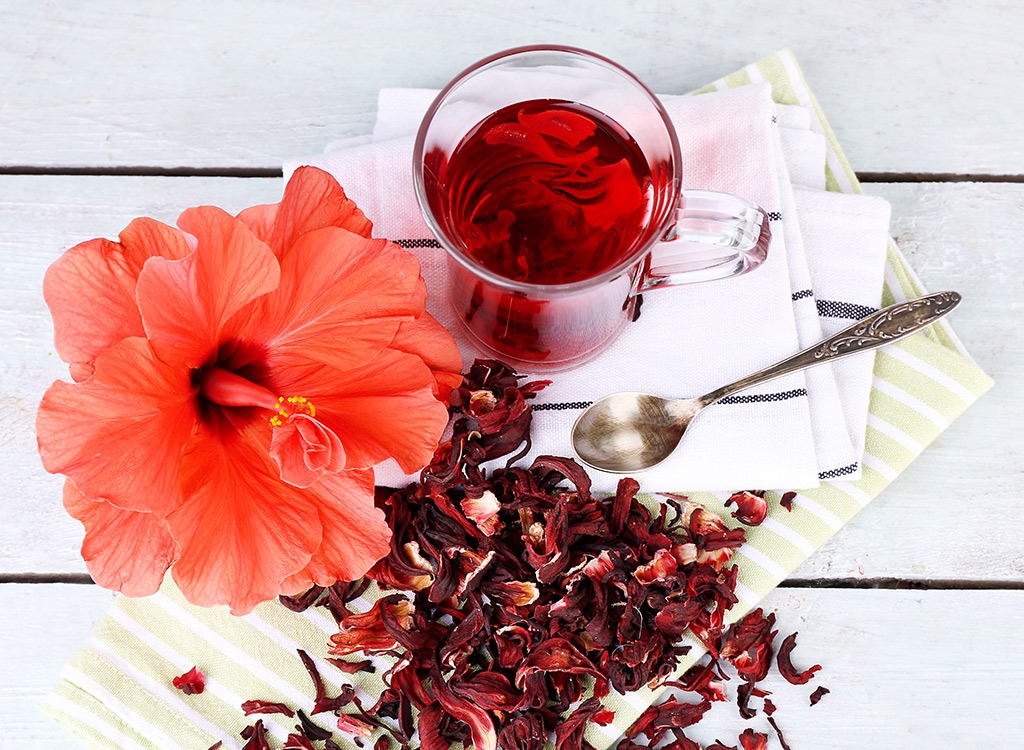
If you’ve been keeping warm all winter by sipping on soup, your pants may be feeling tight. Lighten up! You likely haven’t packed on the pounds if you generally stick to a healthy diet; you’re just bloated from all the salty broths. When you consume a lot of sodium, the body retains fluids, resulting in a paunchy belly. Luckily, there’s a simple solution: Sip some hibiscus tea. Doing so will help your pooch deflate. The flavonoids in the hibiscus plant counteract bloating by influencing how aldosterone, the hormone that regulates water and electrolyte balance, affects the body. We like Alvita’s, Bigelow’s, and Good Nature’s varieties.
RELATED: Test panelists on The 7-Day Flat-Belly Tea Cleanse lost up to 10 pounds in one week!
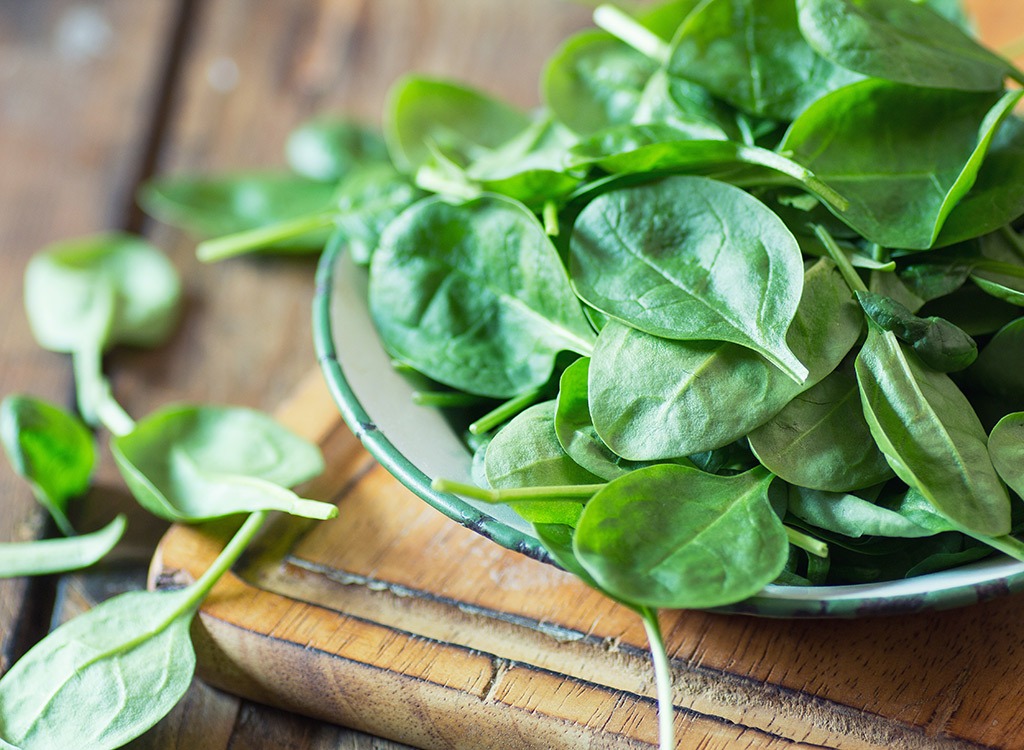
Rich in muscle-building protein, satiating fiber, and vitamins A, C and K, spinach is one of the healthiest greens out there. It also contains powerful appetite-suppressing compounds called thylakoids. Add this leafy spring green to your meals liberally throughout your day and you’ll feel your cravings vanish.
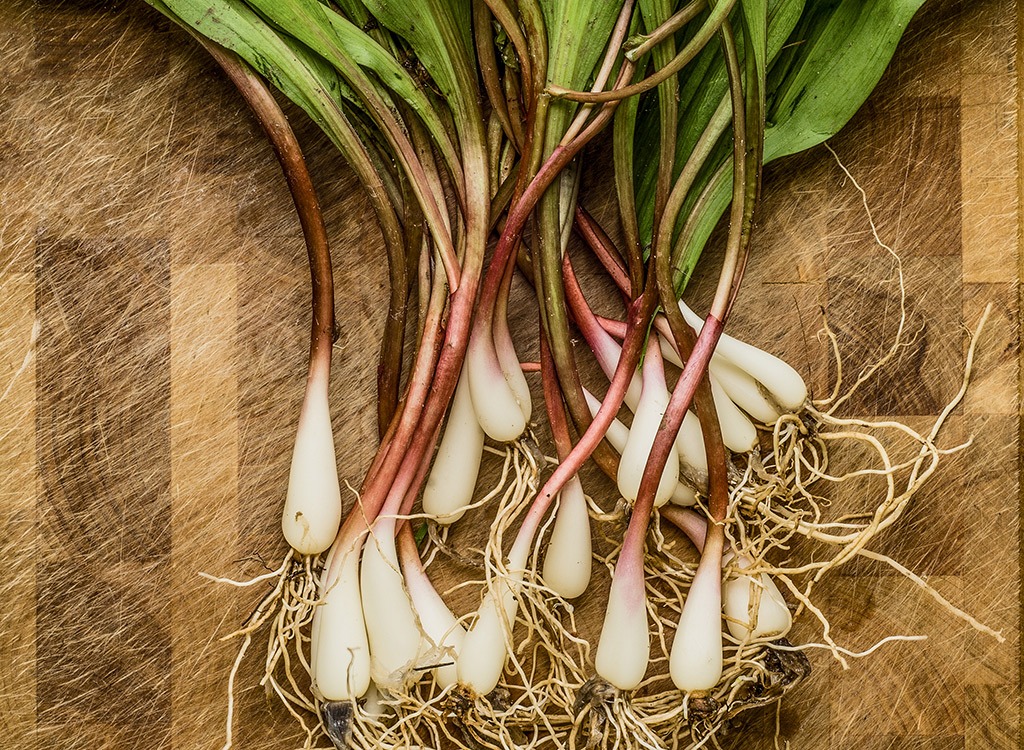
With a mildly sweet flavor, these wild onions, similar to leeks, are loaded with vitamins and minerals. Plus, like leeks, they can pack up to a gram of fiber per ramp. You can eat them raw, make a pesto, or add them to eggs (with asparagus) for an amazingly fresh-tasting spring treat. Ramp season is quick, so grab them when you see them or else you might miss out.
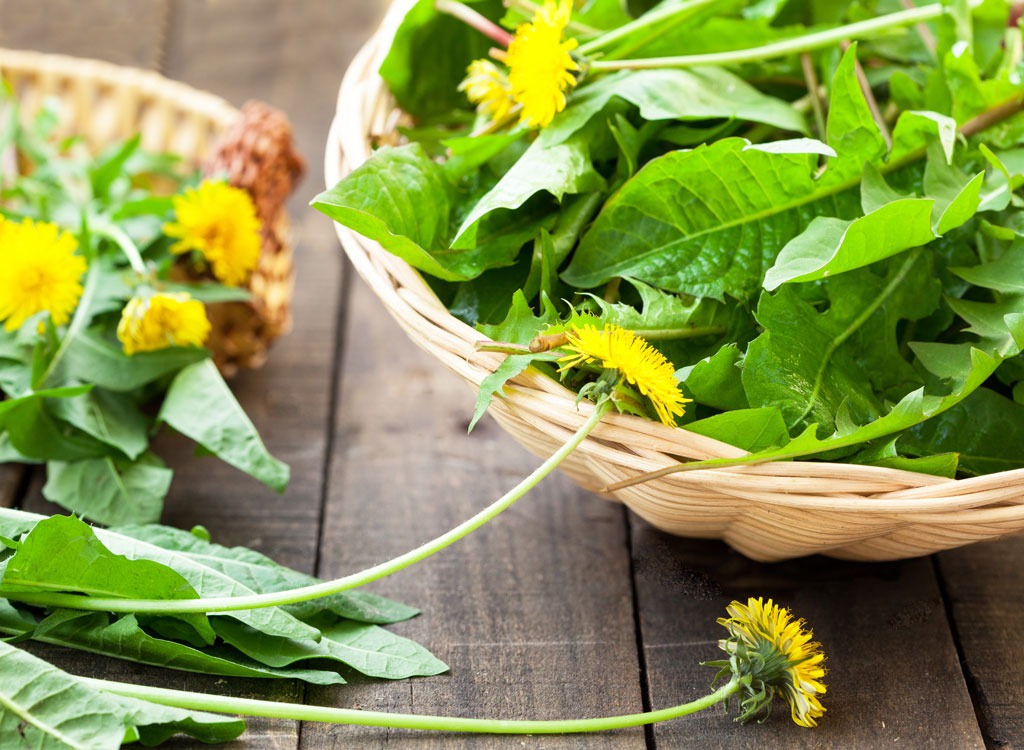
These bittersweet spring greens are bursting with fiber, antioxidants, vitamins, and minerals. They are also a diuretic, which means they can help blast excess weight by helping your body get rid of extra fluids. A recent study found that steaming the greens increases their total antioxidant properties by 67 percent. And studies have found that this plant is protective against obesity as well as depression, fatigue, immune system issues, and even cancer.
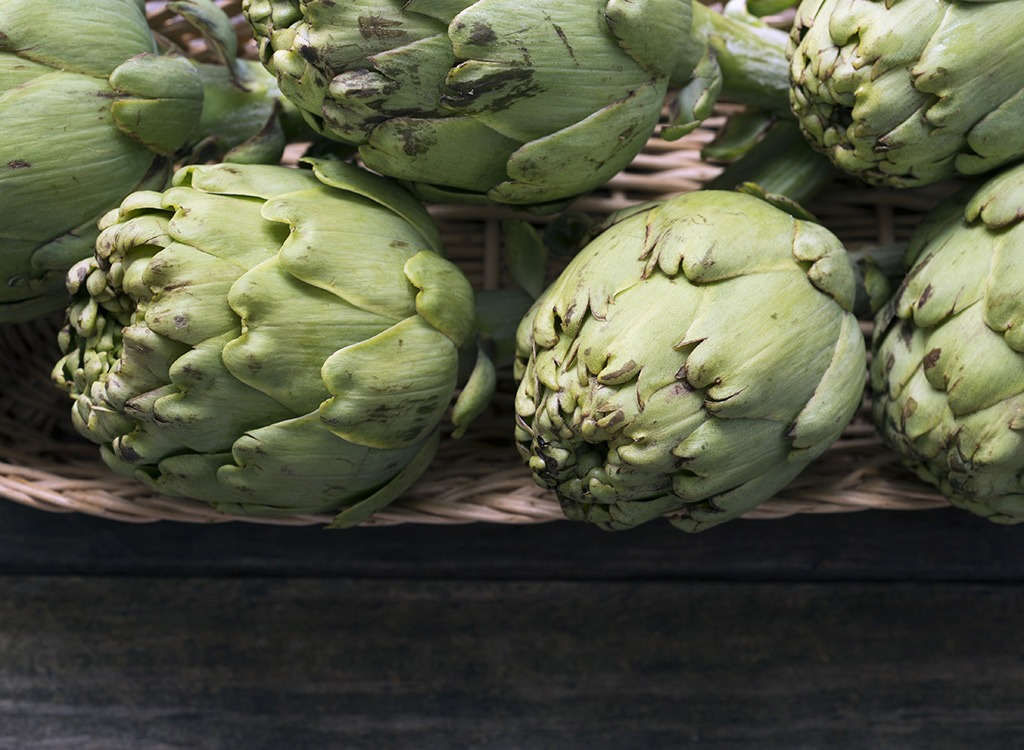
One cooked medium artichoke contains a whopping 10.7 grams of fiber, and a half of a cup of artichoke hearts contains 7 grams of fiber. These numbers make artichokes one of the most potent high-fiber foods for weight loss.
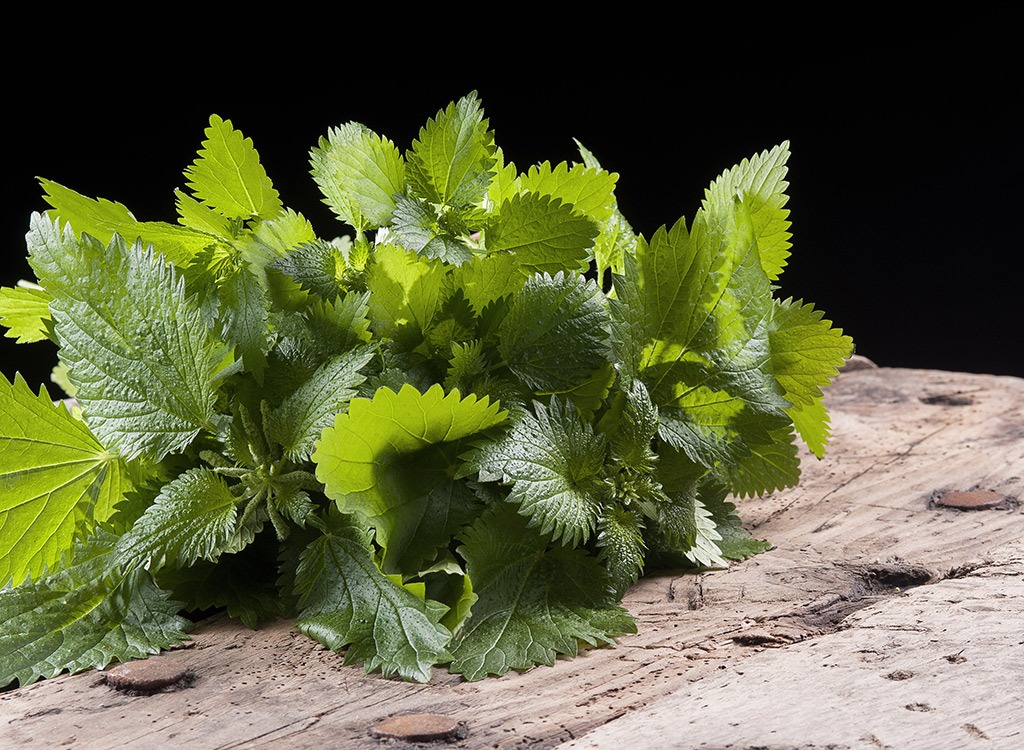
An abundant spring green, nettles are also a powerful diuretic best enjoyed as a hot tea for cleansing the liver and ridding the body of excess fluids. By steeping the leaves in water and straining (a French press like Espro’s works great for this), you can avoid being stung by the tiny hairs that coat the leaf stems. This plant has been used for years in the UK as a springtime cleanse to rid the body of toxins after a winter filled with fatty foods.
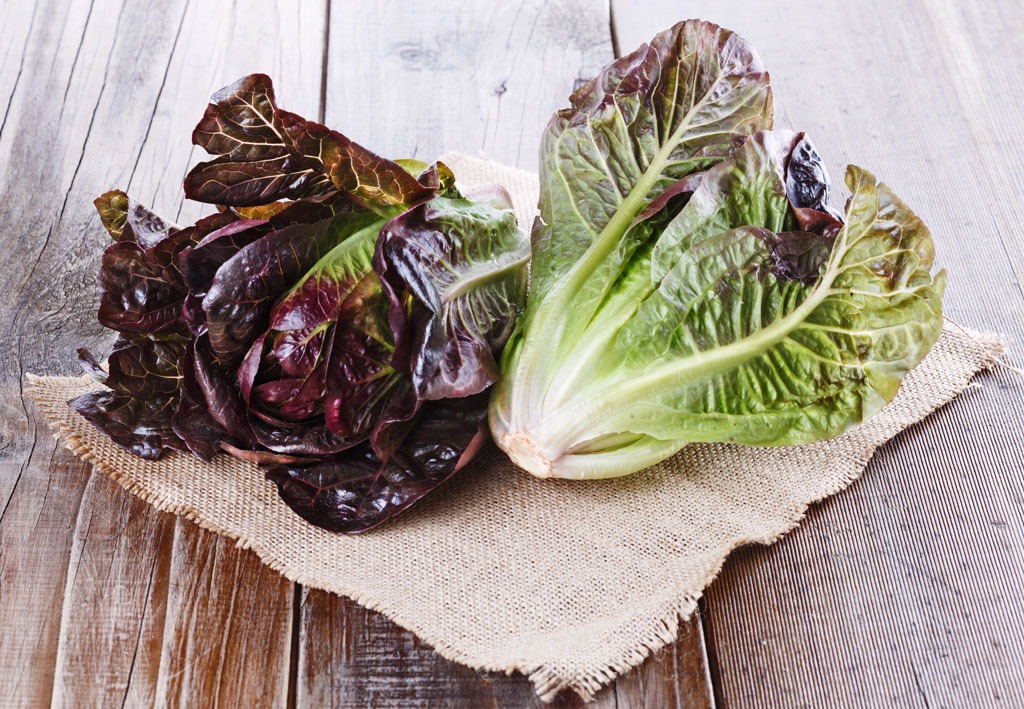
This red-tinged lettuce is one of the world’s greatest weight-loss foods because you don’t have to worry about limiting your portion size like you must with energy-dense picks. One cup of red leaf lettuce packs in only 4 calories yet is bursting with vitamins A and K. Pair the leaves with a bit of healthy fat like avocado to help your body absorb the fat-soluble vitamins.

While we don’t recommend that you go out and try the watercress soup diet, this tiny herb is a powerhouse of vitamins and minerals. In fact, it’s one of the most nutrient-dense foods on the planet and contains only 2 calories per half cup. Add it to soups, salads, and smoothies for a belly-fighting boost.
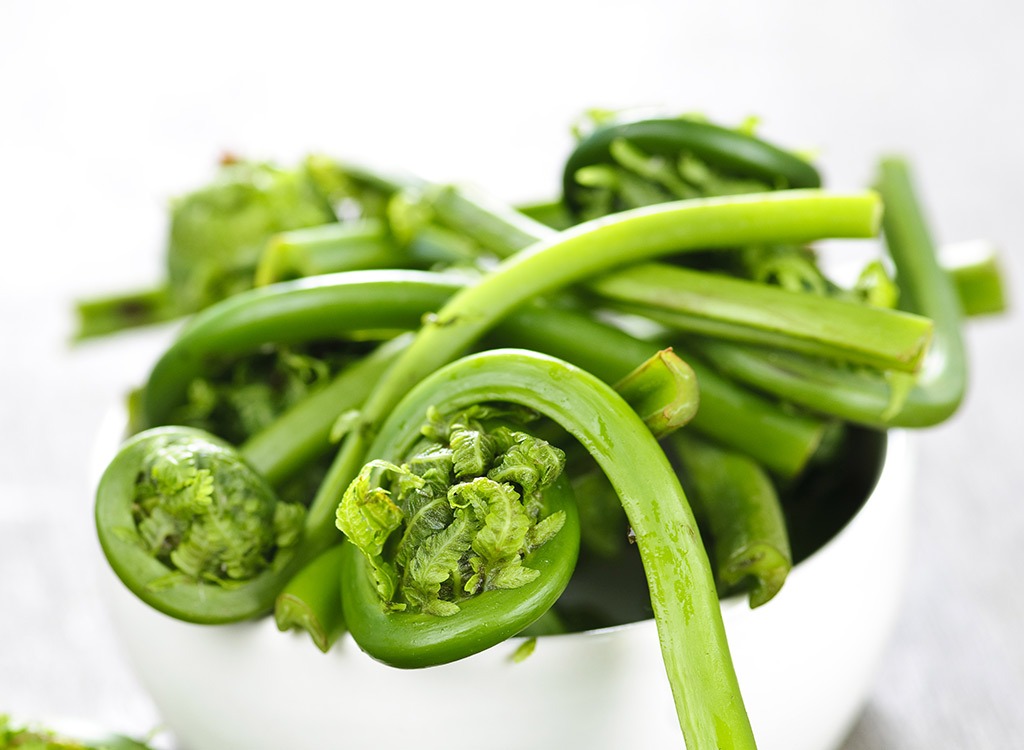
These delicate spirals are packed with fiber, vitamin C, vitamin A, and omega-3 fatty acids, and they are only around for a few weeks in early spring. Clean your ferns by removing the papery outer coating and then soaking them briefly in a bath of cold water with a bit of lemon and salt. Drain and then steam them for 4 to 5 minutes. Add the steamed fiddleheads to a skillet with a few tablespoons of melted butter and cook on each side for a minute or two. They’ll turn golden like asparagus. Add salt and pepper to taste and enjoy!
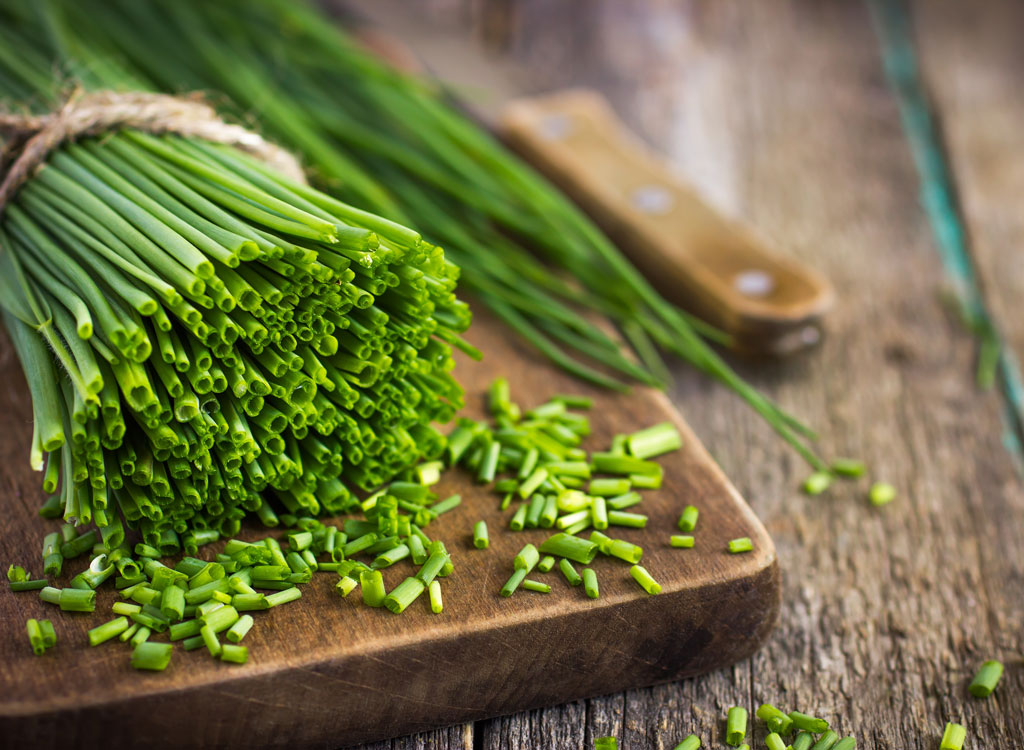
If you’ve only had chives when they’re whipped into cream cheese and smothered on a toasted bagel, then you’re definitely missing out on this healthful allium’s waist-whittling benefits. With just one calorie per tablespoon, chives add a wallop of flavor to any soup, stew, or stir-fry without sabotaging your weight-loss goals. Not only that, chives also contain the powerful compound allicin, which has been shown to reduce harmful LDL cholesterol and blood pressure levels.

Papaya is best known for its digestion-aiding enzyme, papain, which can help you banish bloat and button up your jeans with ease. This inflammation-fighting compound helps your GI tract break down proteins that usually result in uncomfortable bloating. What’s more, its stellar fiber content (almost 4 grams per cup, mashed) can also help you feel fuller for longer. If you’re unsure of how to incorporate this tropical fruit into your diet, start by tossing it into a breakfast smoothie or showcasing its unique flavor profile by adding it to a refreshing salad.
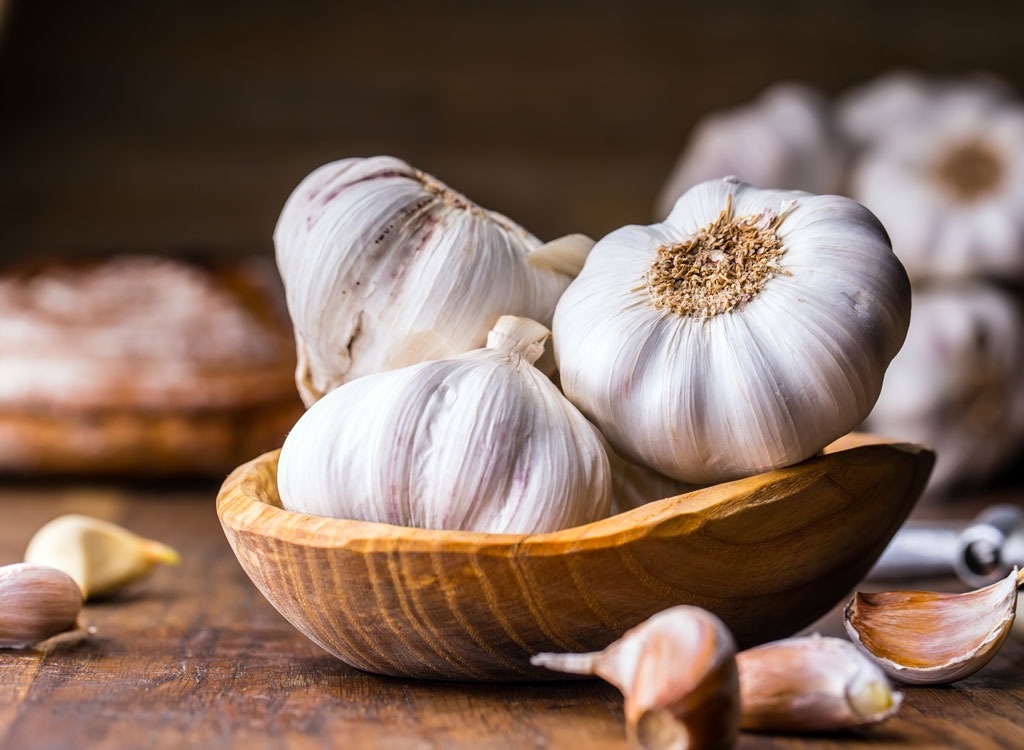
Just like its chive cousin, garlic also contains anti-inflammatory allicin, a negligible amount of calories, and delivers a boatload of flavor. What’s more, this go-to seasoning supports liver enzymes and processes important to your body’s natural cleansing regime, New York-based dietitian Deborah Malkoff-Cohen, RD, CDN, CDE tells us in 15 Superfoods to Spring Clean Your Body.
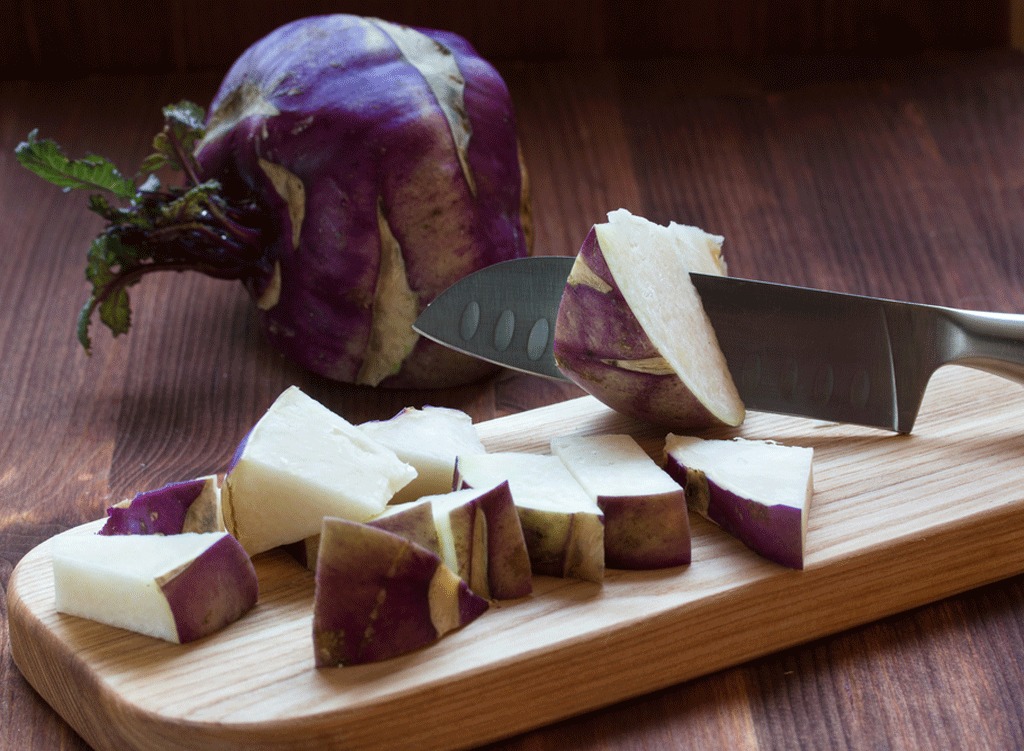
This oft-overlooked veggie contains about 5 grams of fiber, 2.3 grams of protein, and only 36 calories per cup, making for the ideal weight loss kitchen staple. Plus, kohlrabi is rife with vitamin C, which has been shown to ward off weight gain and maximize fat loss during a workout, according to a study in the Journal of the American College of Nutrition. Allow its delicate flavor profile to steal the spotlight by garnishing the raw veggie with lemon juice and a dash of salt for a light salad. As an alternative, try roasting the kohlrabi with a sprinkle of heart-healthy olive oil until it caramelizes for a sweetly nutritious side.

Add Brussels sprouts to your weekly rotation and watch your waistline slim down in no time. Just one cup of the cruciferous veggie contains over 3 grams of fiber and more than a full day’s worth of slimming vitamin C. The mini cabbage is loaded with a sulfur-containing phytochemical called glucosinolate, which may help protect cells from DNA damage, according to the Harvard School of Public Health, which advises to eat them once a week.
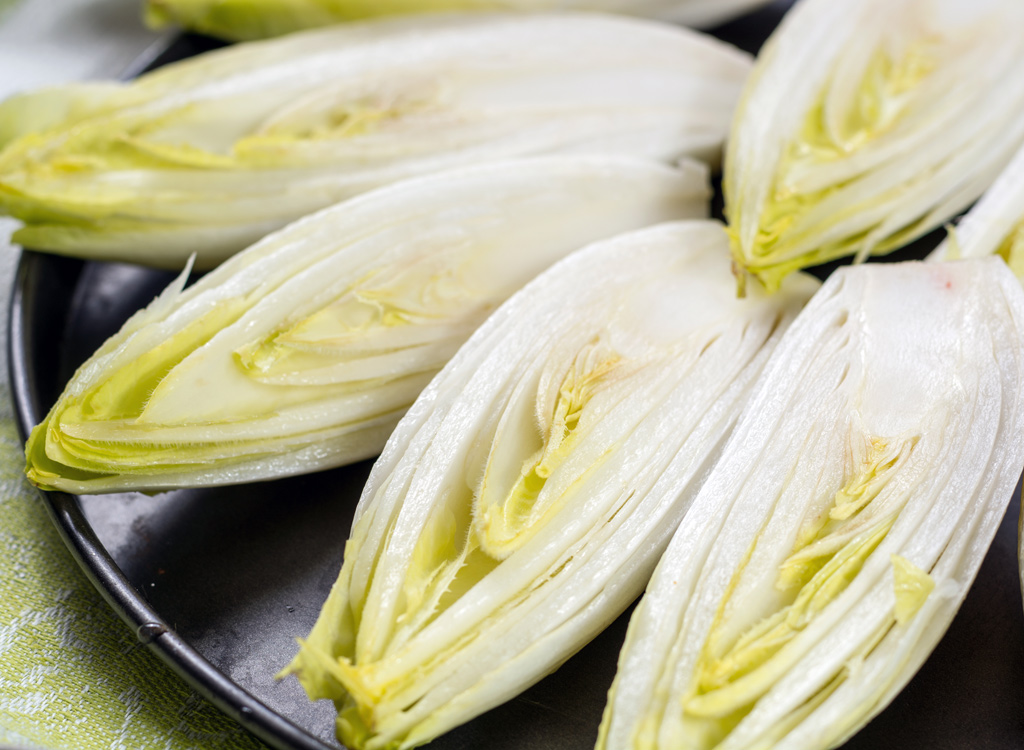
The majority of the carbs in this delicately-flavored veggie come from fiber, deeming it an essential addition to your spring salads. Endives also contain a solid dose of skin- and eye-protecting vitamin A as well as vitamin K, which has been shown to provide cardioprotective benefits and improve insulin sensitivity.

The comical cornerstone of former first lady Michelle Obama’s healthy-eating campaign is also one of our favorite warm-weather foods due to its impressive nutritional profile. The high-fiber cruciferous vegetable can help you stay satiated while regulating your digestive system. Instead of mashing a batch of potatoes, opt for making mashed turnips instead for a swap that’s not only delicious but also lower in carbs and calories.
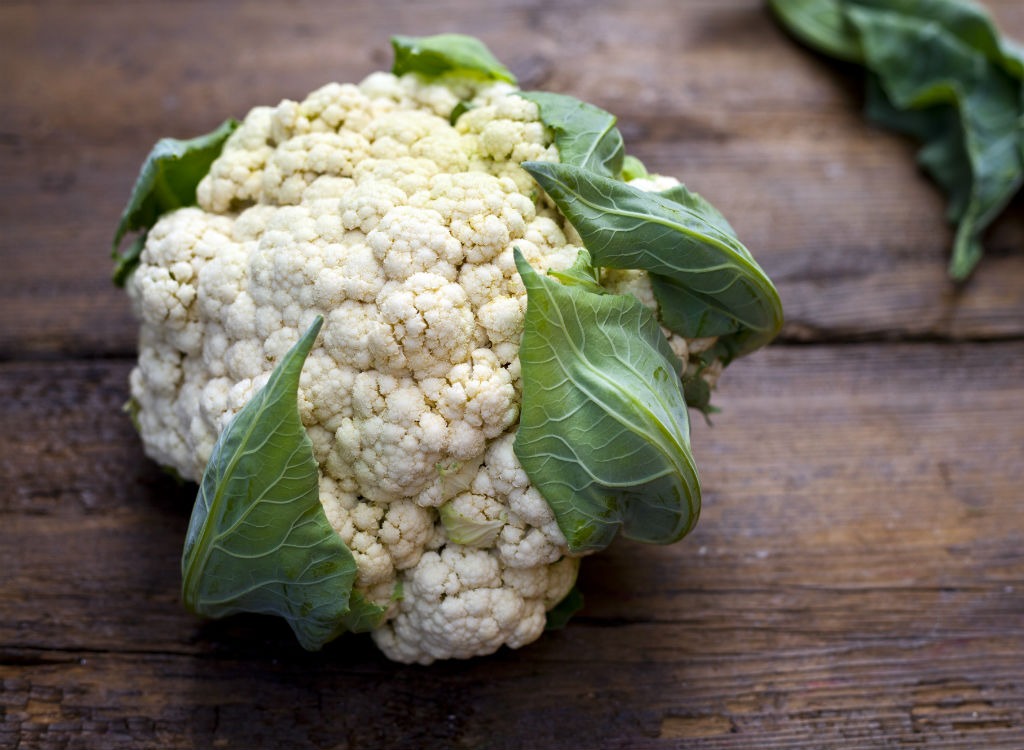
There’s no doubt that this superstar rice substitute would make our list of best spring superfoods for weight loss. After all, it’s chock-full-of slimming nutrients such as fiber and vitamin C, and, not to mention, makes a mean pizza crust! Just one cup of chopped cauli contains 320 milligrams of potassium, which can help ward off high blood pressure and banish ab-ruining bloat by flushing your system of excess water and sodium.
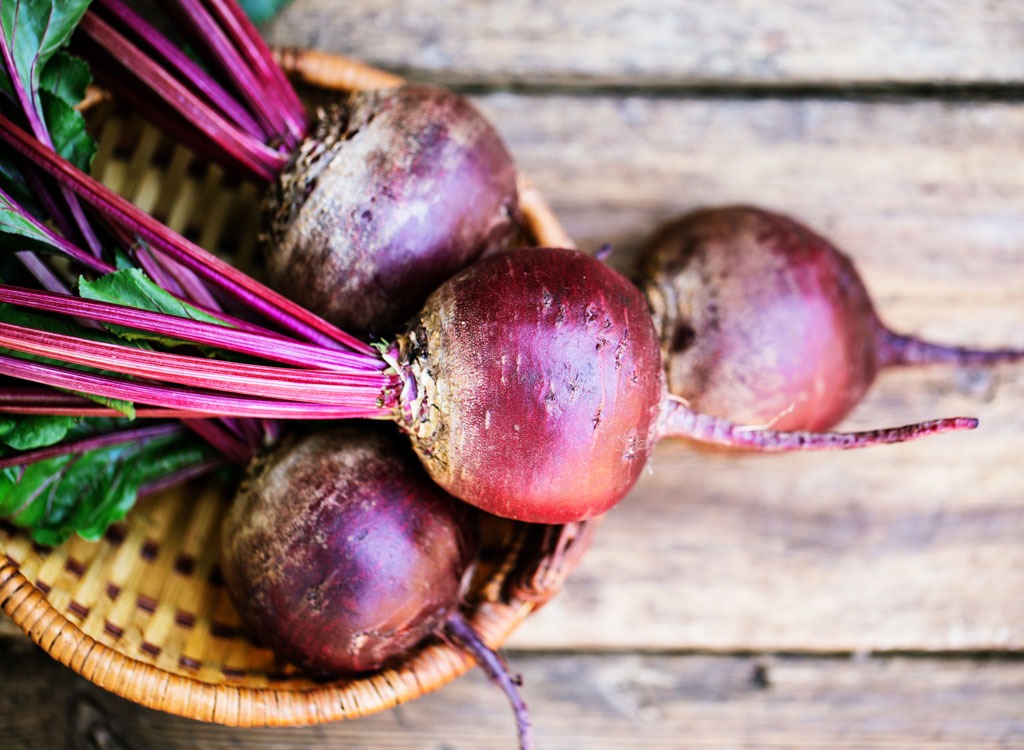
To help streamline your spring detox efforts, start by penning beets onto your meal prep plan. According to a study in the journal Nutrients, beets’ antioxidant, anti-inflammatory, and vascular-protective effects have been shown to help manage cardiovascular disease and cancer as well as reduce blood pressure, inflammation, and oxidative stress. For a delectably sweet snack that won’t show up on your beltline, slice the ruby-hued root and roast it in the oven with a light drizzle of olive oil—and then thank us later. For more guilt-free picks, check out the 50 Best Snacks for Weight Loss.

